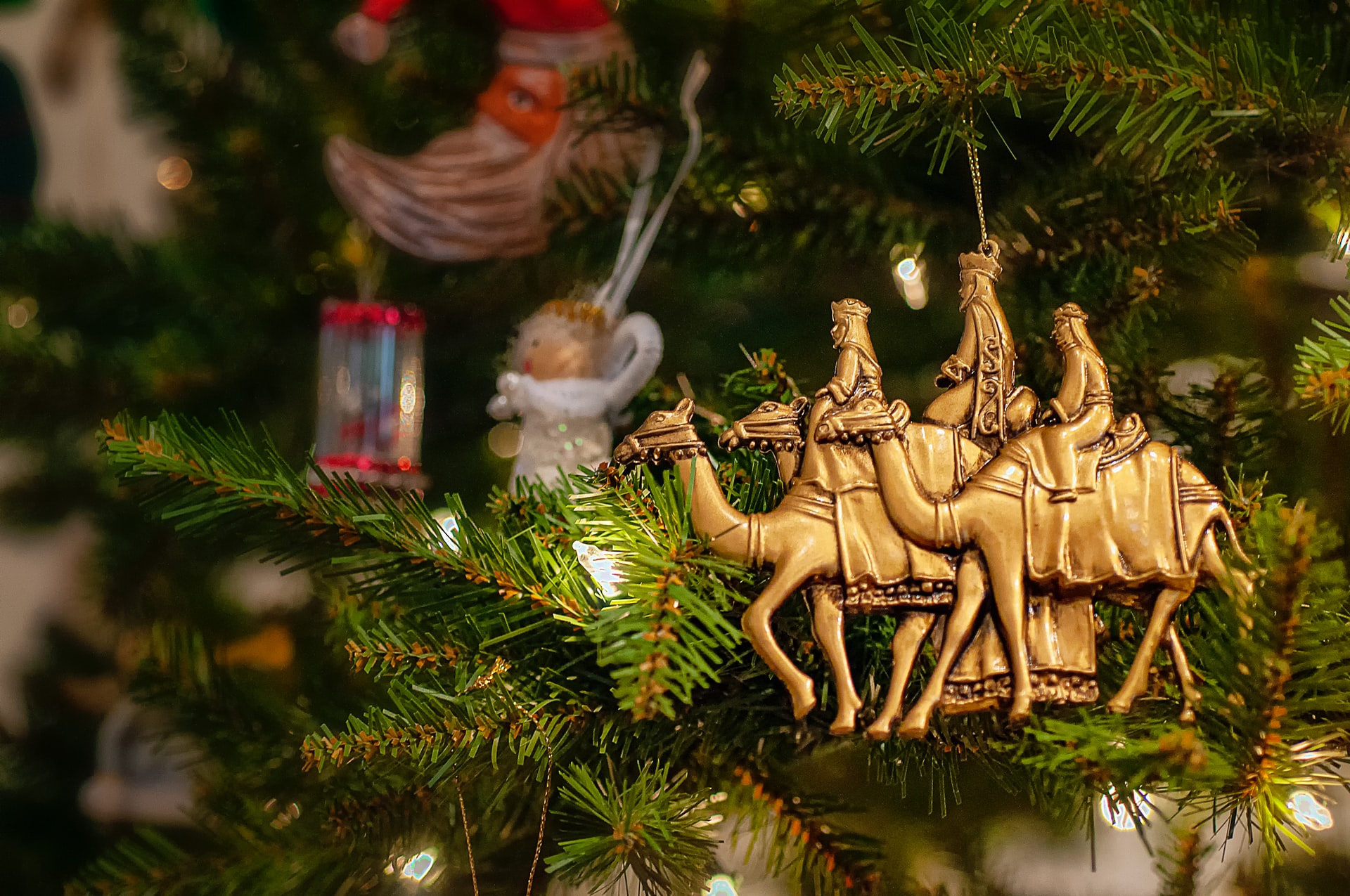El Día de los Reyes Magos, celebrado el 6 de enero en diferentes partes del mundo pero con más entusiasmo en los países latinos, está centrada en familia y tradición. Los Latinoamericanos celebran esta fiesta el mismo día pero con costumbres que varían de país en país.
Por ejemplo en México se escribe una carta en la víspera del 6 de enero y se colocan los zapatos de los niños rellenos de paja o grama al lado de las ventanas para que los camellos puedan comer de eso. El 7 de enero entonces están los regalos justo al lado de los pares de calzado.
En la ciudad de Sevilla, España, se celebra la tradicional cabalgata de Reyes en donde miles de personas esperan las carrozas que transportan a los Reyes Magos quienes obsequian caramelos a los presentes. Y por supuesto no puede faltar el tradicional roscón de Reyes, relleno con un pequeño juguete plástico y quien encuentre el mismo dentro del roscón debe dar una fiesta el 2 de enero para celebrar el Día de la Candelaria. En este país la celebración de Reyes es la más esperada por los niños y la de mayor importancia en la época festiva.
En el caribe, especialmente en Puerto Rico, la celebración tiene un matiz un tanto religioso, la isla es reconocida por celebrar lo que se conoce como “Promesas de Reyes” donde se cantan rosarios en honor a “los tres sabios”. Pero también es un día en donde los niños boricuas dejan agua y yerba para los camellos con la expectativa de recibir regalos de parte de Gaspar, Melchor y Baltazar.
Los países de Latinoamérica tienen también sus costumbres y curiosidades, por ejemplo en Perú son los miembros de la Policía Nacional quienes caracterizan a los Tres Reyes. Y en Venezuela a pesar de no ser particularmente festejado en el pueblo de Galipán en la cima del cerro Ávila, en Caracas, se organizaban cabalgatas para obsequiar golosinas a los niños.
En los Estados Unidos a pesar de no ser un día reconocido oficialmente las diferentes comunidades inmigrantes sí lo celebran. Este día puede que se celebre en California de una manera y en Nueva York de otra, pero lo que no varía es el deseo de nuestras comunidades de mantener viva esta tradición.
Como verán las costumbres son variadas pero tienen dos cosas en común, la ilusión y la esperanza. Los niños, y también adultos, disfrutan de ese día con esos sentimientos a flor de piel. Con ese sentir que miramos hacia un nuevo año, donde tenemos la ilusión que las situaciones que nos aquejan como humanidad sean atendidas y por lo tanto se encuentren soluciones. Y encaramos un nuevo año con la esperanza puesta en las nuevas generaciones, en que no solo cuidarán de estas milenarias tradiciones, sino que con el mismo entusiasmo con el que colocan sus zapatos para recibir regalos, lo mantengan para luchar por un mejor mundo para todos.
ENGLISH TRANSLATION
The Three Kings Day, celebrated on January 6 in different parts of the world but with more enthusiasm in Latin countries, is centered on family and tradition. Latin Americans celebrate this festival on the same day but with customs that vary from country to country.
For example, in Mexico a letter is written on the eve of January 6 and children's shoes stuffed with straw or grass are placed next to the windows so that the camels can eat from it. On January 7 then the gifts are right next to the pairs of shoes.
In the city of Seville, Spain, the traditional Three Kings parade is celebrated where thousands of people wait for the floats that transport the Three Wise Men who give candies to those present. And of course you cannot miss the traditional roscón de Reyes, stuffed with a small plastic toy and whoever finds the same inside the roscón must give a party on January 2 to celebrate Candlemas Day. In this country the celebration of Kings is the most anticipated by children and the most important in the festive season.
In the Caribbean, especially in Puerto Rico, the celebration has a somewhat religious nuance, the island is known for celebrating what is known as "Promises of Kings" where rosaries are sung in honor of "the three wise men." But it is also a day when Puerto Rican children leave water and grass for the camels with the expectation of receiving gifts from Gaspar, Melchor and Baltazar.
The countries of Latin America also have their customs and curiosities, for example in Peru it is the members of the National Police who characterize the Three Kings. And in Venezuela, despite not being particularly celebrated in the town of Galipán on the top of Cerro Ávila, in Caracas, parades were organized to give candy to children.
In the United States, despite not being an officially recognized day, the different immigrant communities do celebrate it. This day may be celebrated in California in one way and in New York in another, but what does not change is the desire of our communities to keep this tradition alive.
As you will see, customs are varied but they have two things in common, illusion and hope. Children, and also adults, enjoy that day with those feelings on the surface. With that feeling that we look towards a new year, where we have the illusion that the situations that afflict us as humanity are addressed and therefore solutions are found. And we face a new year with the hope placed on the new generations, in which they will not only take care of these millenary traditions, but with the same enthusiasm with which they place their shoes to receive gifts, they keep it to fight for a better world for all.
